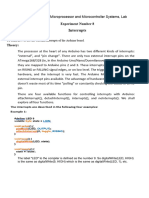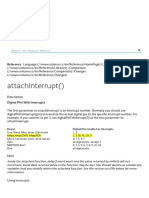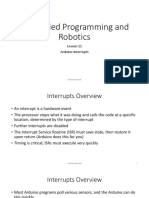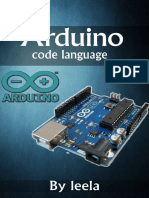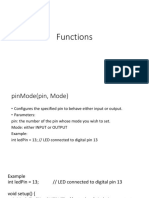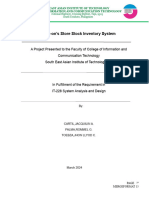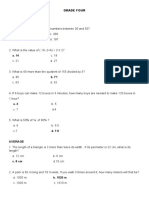0% found this document useful (0 votes)
70 views13 pagest4 2 Arduino Revisited
The document discusses two methods for programming an Arduino to respond to a button press:
1. Polling the button pin in a loop to check its state.
2. Using interrupts to call an interrupt service routine (ISR) when the button pin state changes, allowing other code to run without needing to constantly check the button.
It then provides more details on interrupts in Arduinos, including the different interrupt pins, attaching interrupts, keeping ISRs short, and techniques for sharing data between an ISR and the main program code.
Uploaded by
DYLAN BRADLEYCopyright
© © All Rights Reserved
We take content rights seriously. If you suspect this is your content, claim it here.
Available Formats
Download as PDF, TXT or read online on Scribd
0% found this document useful (0 votes)
70 views13 pagest4 2 Arduino Revisited
The document discusses two methods for programming an Arduino to respond to a button press:
1. Polling the button pin in a loop to check its state.
2. Using interrupts to call an interrupt service routine (ISR) when the button pin state changes, allowing other code to run without needing to constantly check the button.
It then provides more details on interrupts in Arduinos, including the different interrupt pins, attaching interrupts, keeping ISRs short, and techniques for sharing data between an ISR and the main program code.
Uploaded by
DYLAN BRADLEYCopyright
© © All Rights Reserved
We take content rights seriously. If you suspect this is your content, claim it here.
Available Formats
Download as PDF, TXT or read online on Scribd
/ 13




